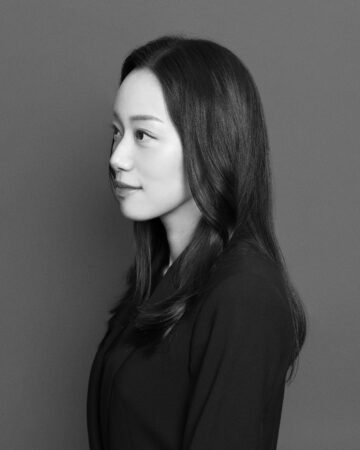10 Questions for Sunnie Chae

Happy scenes made me perfectly bitter that autumn. The season dragged on instead of running its course, looping back in a closed curve. Instead of moving from spring to summer to autumn, it was autumn, autumn, and autumn again.
Would winter ever arrive?
—from “Autumn Heatwave” by Park Seon Woo, translated by Sunnie Chae, Volume 66 Issue 2 (Summer 2025)
Tell us about one of the first pieces you translated.
I translated Jang Ryu-jin’s “Maya in Tokyo” for a chapbook series by ASIA Publishers. The story follows a Korean narrator visiting a Zainichi Korean friend from university, now living in Japan. It explores diasporic identity and belonging through personal relationships.
What other professions have you worked in?
I used to be a media translator moonlighting as a literary translator. By day, I worked in-house translating and editing subtitles for a post-production company, then later moved to a content platform. At night, I switched gears to translate what I loved—namely, film and literature. I’ve always been enamored with the physicality of books. As a student, I worked in the circulation department of a library. I started out labeling new books for the shelves, but once I proved my knack for working with archival glues and brushes, I shifted to repairs. I reattached spines, fixed tears, replaced missing pages, and added pockets for inserts. The office was tucked away in the deepest, mustiest corner of the library, but I enjoyed every minute of working in that little hospital for books.
What drew you to write a translation of this piece in particular?
“Autumn Heatwave” is one of eight stories in Park Seon Woo’s We in the Same Place, a book about finding connection. Characters at odds with themselves wade through obligations and desires, attempting to navigate love from both sides—offering and receiving. I first encountered the collection in 2020, when I was still an office worker in media but feeling increasingly detached from everything, including myself. I read the book on my subway commute, mesmerized by the emotionally searching, intricately crafted stories. In the queer romance “Autumn Heatwave,” belated understanding of a loved one arrives through a vision—an old scene replayed from a new perspective. The story also incorporates the Korean urban myth of “fan death” as a plot device.
Is there a city or place, real or imagined, that influences your writing?
Seoul. Seoul. Seoul. My home for nearly two decades now. (I grew up in Daejeon, a smaller, sleepier city a few hours away.) There’s nothing picturesque about Seoul—at least not in my run-down neighborhood. I love it for being gritty and gray. Out my window, I see a chaotic mesh of squat concrete buildings, utility poles, and electric cables. Not a single tree. Not even a blade of grass. In the grimness of this city, anything too bright feels false.
Is there any specific music that aids you through the writing or editing process?
George Vlad’s recordings of rain on Earth.fm soothe me enough to write. Or Max Richter.
Do you have any rituals or traditions that you do in order to write?
For me, writing involves overcoming fear. I’m an anxiety-riddled neurodivergent translator, recently diagnosed with autism spectrum disorder. My symptoms are relatively mild—but not as mild as most acquaintances assume. I’ve simply learned to hide them in public. When I sit down to write, though, there’s nowhere to hide. I have to stop feigning and reach for some kind of truth, whether I succeed or not. As a way of coaxing my terrified self onto the page, I embrace inevitable failure—as long as I fail as honestly as I can.
Who typically gets the first read of your work?
For Park Seon Woo’s “Autumn Heatwave,” I gave my first-ever translation reading at the [margins.] Virtual Conference 2024. The gracious, attentive audience previewed the piece.
If you could work in another art form what would it be?
Music. Musicians are my gods. I would’ve loved to have a talent for it, but alas—my attempts to learn instruments caused pain for everyone within earshot. I recently accompanied two translators to a noraebang (a Korean karaoke room), my first visit in eleven years. It reminded me of why I’d stayed away for so long—and why I probably shouldn’t go back. I can’t sing to save my life. But I’ve always appreciated the analogy of translation as musical performance: a translator makes a writer-composer’s work audible to a readership-audience.
What are you working on currently?
A film project fell into my lap. I’m working on English subtitles for Kim Jong-kwan’s latest feature Frosted Window. Subtitling for film requires a fair amount of discipline, given its strict limits: two lines, 37 characters each. When translating prose, I revel in the luxury of not having to economize on every space and letter.
What are you reading right now?
I’m reading Moldy Strawberries, stories by Caio Fernando Abreu, translated by Bruna Dantas Lobato and published by Archipelago Books. It’s a tour de force. If I ever manage to rebirth Korean stories into English with such fearless prose, I’ll die a happy translator. SUNNIE CHAE is a neurodivergent translator and a lecturer at Ewha Womans University in Seoul. Her work is forthcoming in Words Without Borders.
SUNNIE CHAE is a translator from Korea and a lecturer at Ewha Womans University in Seoul.



